Responsive Public Policies for Smart and Sustainable Buildings: An Experimental Application of the Smart Readiness Indicator
Abstract
1. Introduction
2. Materials and Methods
2.1. The SRI’s Background and Development in EU Polices and Strategies: A Critical Analisis
- Optimize in-use performance, which includes energy efficiency;
- Adapt operations to the occupants’ needs;
- Respond and adapt to signals from the grid.
2.2. The SRI’s Calculation and Active Tools
2.3. The SRI’s Experimental Application
- The redefinition of common areas, the restoration of the internal courtyard, and the construction of a multi-purpose room.
- The functional reorganization of internal spaces and the re-design of offices.
- Seismic adaptation.
- The adoption of innovative technical solutions to improve the energy efficiency of the building and reduce its environmental impact.
- Regulatory realignment according to the European Directives 2030–2050 for PA.
- The introduction of certain analysis criteria, evaluations, and energy intervention strategies for the building envelope and housing comfort requirements.
- Material choices to align with the Italian Green Public Procurement (PAN-GPP) guidelines, Minimum Environmental Criteria (MEC), and Criteri Ambientali Minimi (CAM) for Italian regulations [31].
- The proposal of criteria for automation, control, and monitoring systems to allow the optimal management of buildings and plants.
- −
- Heating (H);
- −
- Domestic hot water (DHW);
- −
- Cooling (C);
- −
- Lighting (L);
- −
- Electricity (E).
3. Results
4. Discussion and Conclusions
- The experiment is currently based on a pilot which, although typologically and structurally representative of many historic buildings at the national and European levels, cannot be extended to other case studies.
- The specific characteristics of historic buildings, such as their original materials and architectural constraints, may limit the use of smart technologies.
- The regulatory constraints imposed for the protection of heritage (such as National Superintendencies) often limit the possibility of renovation interventions, further affecting the application of the SRI.
- The availability of data and simulations in the pre-design phase may affect the accuracy of the results.
Author Contributions
Funding
Data Availability Statement
Acknowledgments
Conflicts of Interest
Abbreviations
| EPC | Energetic Performance Certificate |
| SRI | Smart Readiness Indicator |
| BIM | Building Information Modeling |
| PRIN | Progetti di Ricerca di Rilevante Interesse Nazionale |
| EU | European Union |
| KET | Key Enabling Technologies |
| EPBD | Energy Performance of Building Directive |
| nZEB | Nearly Zero-Energy Building |
| ZeMB | Zero-Emission Building |
| BRP | Building Renovation Passport |
| PA | Public Administration |
| ENEA | Italian National Agency for New Technologies, Energy and Sustainable Economic Development |
| L. | Legge |
| art. | Articolo |
| D.Lgs | Decreto legislativo |
| PAN-GPP | Piano d’Azione Nazionale—Green Public Procurement |
| MEC | Minimum Environmental Criteria |
| CAM | Criteri Ambientali Minimi |
| H | Heating |
| DHW | Domestic Hot Water |
| C | Cooling |
| L | Lighting |
| E | Electricity |
References
- European Commission. The European platform against poverty and social exclusion. In A European Framework for Social and Territorial Cohesion; EU Publications Office: Luxembourg, 2011. [Google Scholar] [CrossRef]
- European Commission. Stepping Up Europe’s 2030 Climate Ambition Investing in a Climate-Neutral Future for the Benefit of Our People; COM/2020/562 final; European Union: Brussels, Belgium, 2020. [Google Scholar]
- European Commission. Commission Implementing Regulation (Eu) 2020/2156 of 14 October 2020 Detailing the Technical Modalities for the Effective Implementation of an Optional Common Union Scheme for Rating the Smart Readiness of Buildings. Off. J. Eur. Union 2020, 431, 25–29. [Google Scholar]
- European Commission. European Pillar of Social Rights Action Plan; COM (2021)102; European Union: Brussels, Belgium, 2021. [Google Scholar]
- European Parliament. European Council Decision Establishing the Digital Decade Policy Programme 2030. Off. J. Eur. Union 2022, 323, 4–26. [Google Scholar]
- European Commission. Preparing for Our Future: Developing a Common Strategy for Key Enabling Technologies in the EU; EU-COM (2009)512; European Union: Brussels, Belgium, 2009. [Google Scholar]
- European Commission. Industry 5.0: Towards More Sustainable, Resilient and Human-Centric Industry; EU (2021b); European Union: Brussels, Belgium, 2021. [Google Scholar]
- European Commission; Joint Research Centre; Alberti, V.; Caperna, G.; Colagrossi, G.; Panella, F. A Europe Fit for the Digital age—Tracking Europeans’ Interest in EC Priorities Using Online Search Data; Publications Office of the European Union: Luxembourg, 2022. [Google Scholar] [CrossRef]
- European Commission. The European Green Deal; COM (2019) 640 final; European Union: Brussels, Belgium, 2019. [Google Scholar]
- Al Dakheel, J.; Del Pero, C.; Aste, N.; Leonforte, F. Smart buildings features and key performance indicators—A review. Sustain. Cities Soc. 2020, 61, 102328. [Google Scholar] [CrossRef]
- European Environment Agency. Available online: https://www.eea.europa.eu/publications/building-renovation-where-circular-economy (accessed on 12 May 2025).
- Directive (EU) 2024/1275 of the European Parliament and of the Council of 24 April 2024 on the Energy Performance of Buildings; Brussels; Belgium, 2024. Available online: http://data.europa.eu/eli/dir/2024/1275/oj (accessed on 7 April 2025).
- Communication from the Commission to the European Parliament, the Council, the European Economic and Social Committee and the Committee of the Regions, a Renovation Wave for Europe—Greening our Buildings, Creating Jobs, Improving Lives, Brissels 2020; COM(2020) 662 Final. Available online: https://eur-lex.europa.eu/legal-content/EN/TXT/?uri=celex:52020DC0662 (accessed on 7 April 2025).
- European Comission. Supplementing Directive (EU) 2010/31/EU of the European Parliament and of the Council by Establishing an Optional Common European Union Scheme for Rating the Smart Readiness of Buildings. Off. J. Eur. Union 2020, 431, 9–24. [Google Scholar]
- European Commission. Directorate-General for Communications Networks, Content and Technology, 2030 Digital Decade—Annex 1—Competitiveness and Sovereignty, People, Smart Greening, Policy Coherence and Synergies; Publications Office of the European Union: Luxembourg, 2024. [Google Scholar]
- Andersen, R.K.; Junak, K.; Novikova, T.; Popov, P.; Vogt, G.; Zaniboni, L. Report on Survey and Interview Results in Tuning EPC and SRI Instruments to Deliver Full Potential TunES Project. 2024. Available online: https://webgate.ec.europa.eu/life/publicWebsite/project/tunES-101120926/tuning-epc-and-sri-instruments-to-deliver-full-potential (accessed on 7 April 2025).
- European Commission. Final Report on the Technical Support to the Development of a Smart Readiness Indicator For Buildings—Summary; Publications Office: Luxembourg, 2020. [Google Scholar]
- Proposal for a Regulation of the European Parliament and of the Council Establishing the Digital Europe Programme for the Period 2021–2027; Brussels 2018; COM/2018/434 Final—2018/0227 (COD). Available online: https://eur-lex.europa.eu/legal-content/IT/ALL/?uri=COM:2018:434:FIN (accessed on 7 April 2025).
- European Council of the European Union. 8 Ways Life in the EU is Becoming Greener. Available online: https://www.consilium.europa.eu/it/8-ways-life-in-the-eu-is-becoming-greener/ (accessed on 12 May 2025).
- ENEA. Direttiva EPDB. Available online: https://www.efficienzaenergetica.enea.it/glossario-efficienza-energetica/lettera-d/direttiva-epdb.html (accessed on 12 May 2025).
- Capozzoli, A.; Pavan, A. Smart Building: Digitization for Net Zero; GBC Council ITA: Milano, Italy, 2024. [Google Scholar]
- Canale, L.; De Monaco, M.; Di Pietra, B.; Puglisi, G.; Ficco, G.; Bertini, I.; Dell’Isola, M. Estimating the Smart Readiness Indicator in the Italian Residential Building Stock in Different Scenarios. Energies 2021, 14, 6442. [Google Scholar] [CrossRef]
- Vigna, I.; Pernetti, R.; Pernigotto, G.; Gasparella, A. Analysis of the Building Smart Readiness Indicator Calculation: A Comparative Case-Study with Two Panels of Experts. Energies 2020, 13, 2796. [Google Scholar] [CrossRef]
- Becchio, C.; Corgnati, S.P.; Crespi, G.; Pinto, M.C.; Viazzo, S. Exploitation of dynamic simulation to investigate the effectiveness of the Smart Readiness Indicator: Application to the Energy Center building of Turin. Sci. Technol. Built Environ. 2021, 27, 1127–1143. [Google Scholar] [CrossRef]
- Chatzikonstantinidis, K.; Giama, E.; Fokaides, P.A.; Papadopoulos, A.M. Smart readiness indicator (SRI) as a decision-making tool for low carbon buildings. Energies 2024, 17, 1406. [Google Scholar] [CrossRef]
- Affonso, E.O.T.; Branco, R.R.; Menezes, O.V.C.; Guedes, A.L.A.; Chinelli, C.K.; Haddad, A.N.; Soares, C.A.P. The Main Bar-riers Limiting the Development of Smart Buildings. Buildings 2024, 14, 1726. [Google Scholar] [CrossRef]
- EnerSIG, Application to Cross Data about Buildings Characterization and Energy Consumption in Paris. Available online: https://www.interregeurope.eu/good-practices/enersig-application-to-cross-data-about-buildings-characterization-and-energy-consumption-in-paris/ (accessed on 20 March 2025).
- Elagiry, M.; Marino, V.; Lasarte, N.; Elguezabal, P.; Messervey, T. BIM4Ren: Barriers to BIM Implementation in Renovation Processes in the Italian Market. Buildings 2019, 9, 200. [Google Scholar] [CrossRef]
- SRI Observatory. Available online: https://sriobservatory.eu/sri_country/italy/ (accessed on 12 May 2025).
- Ministerial Decree 07/03/2012 “Adoption of Minimum Environmental Criteria to be Included in Public Administration Tenders for the Purchase of Energy Services for Buildings-Lighting and Motive Power Service-Heating/Cooling Service”. Available online: https://def.finanze.it/DocTribFrontend/getAttoNormativoDetail.do?ACTION=getArticolo&id=%7B3C55719C-3794-40C6-BDA9-381D5D76F4ED%7D&codiceOrdinamento=050000000000000&articolo=Preambolo#:~:text=%2F2012%20%2D%20Min.-,Ambiente%20e%20Tutela%20terr.,%2D%20servizio%20di%20riscaldamento%2Fraffrescamento (accessed on 12 May 2025).
- Green Public Procurement. Available online: https://gpp.mase.gov.it/CAM-vigenti (accessed on 12 May 2025).
- Boje, C.; Kubicki, S.; Guerriero, A.; Thomas, S. Aligning IFC and SRI domains for BIM supported SRI assessement. In Proceedings of the 2022 IEEE 28th International Conference on Engineering, Technology and Innovation (ICE/ITMC) & 31st International Association For Management of Technology (IAMOT) Joint Conference, Nancy, France, 19–23 June 2022. [Google Scholar] [CrossRef]
- Walczyk, G.; Ożadowicz, A. Moving Forward in Effective Deployment of the Smart Readiness Indicator and the ISO 52120 Standard to Improve Energy Performance with Building Automation and Control Systems. Energies 2025, 18, 1241. [Google Scholar] [CrossRef]
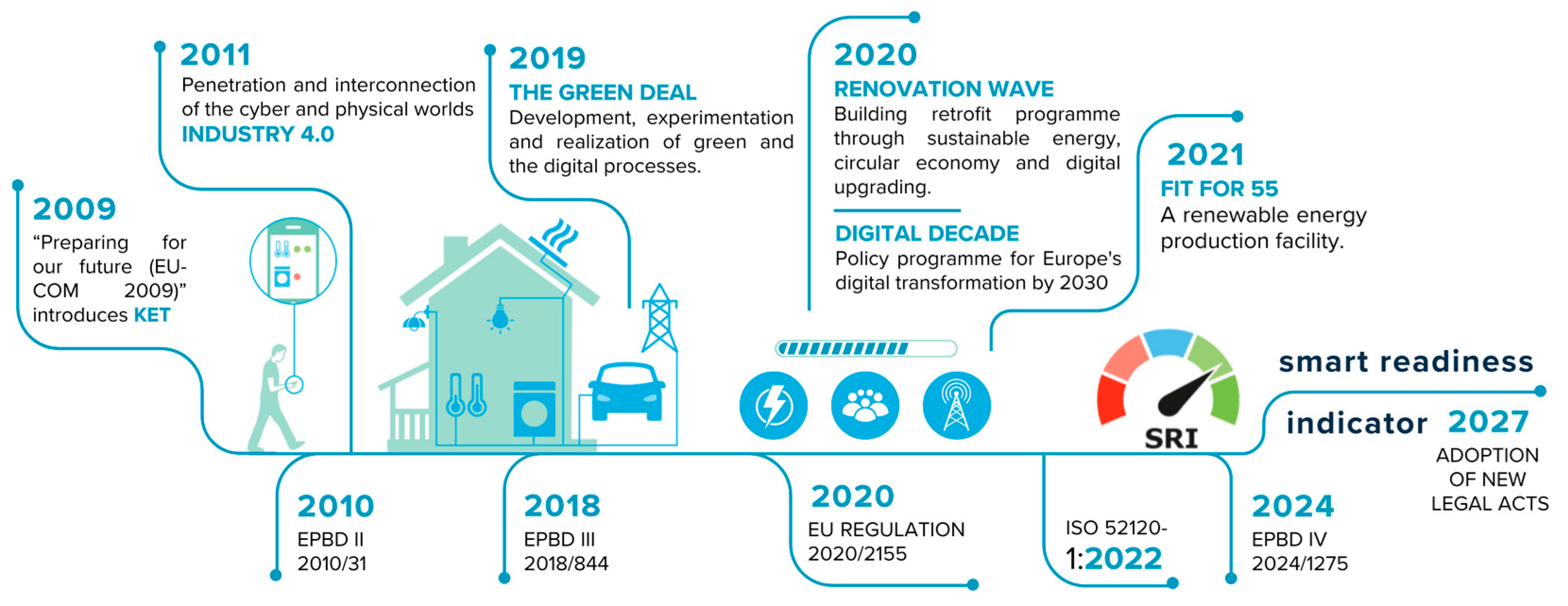


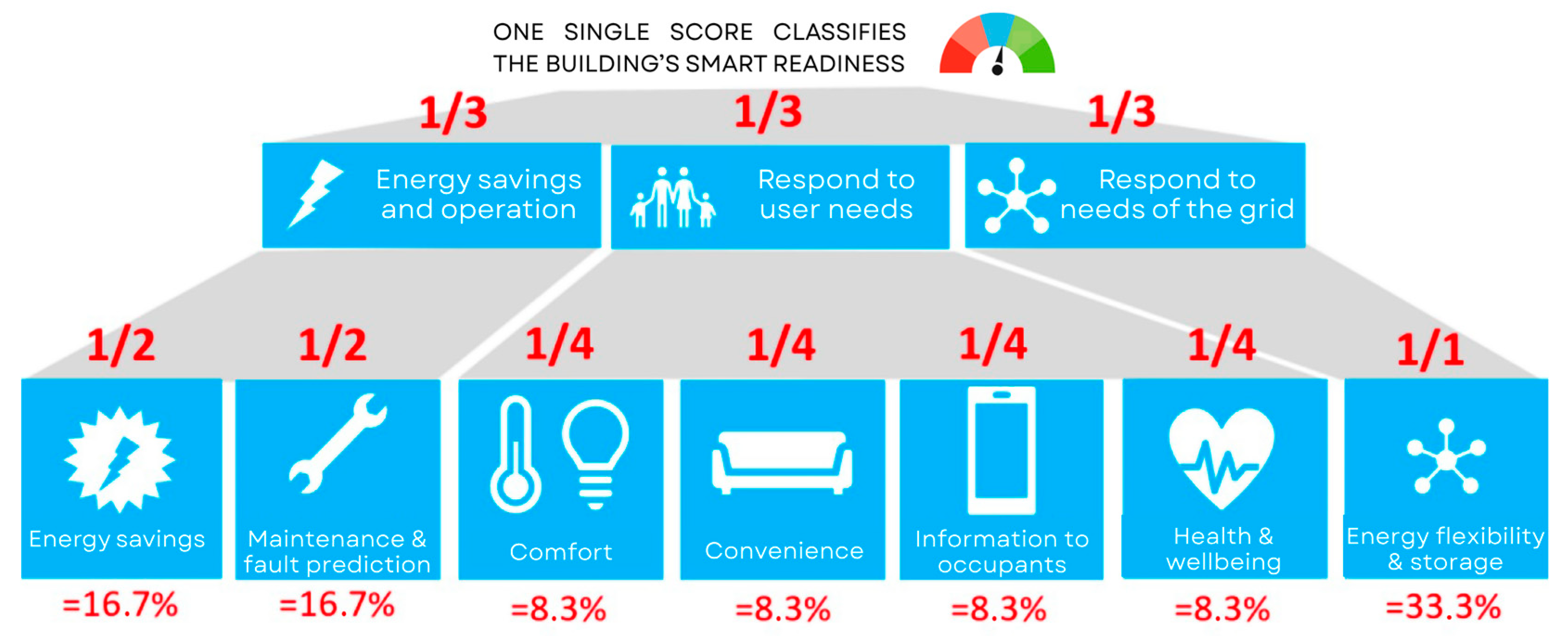

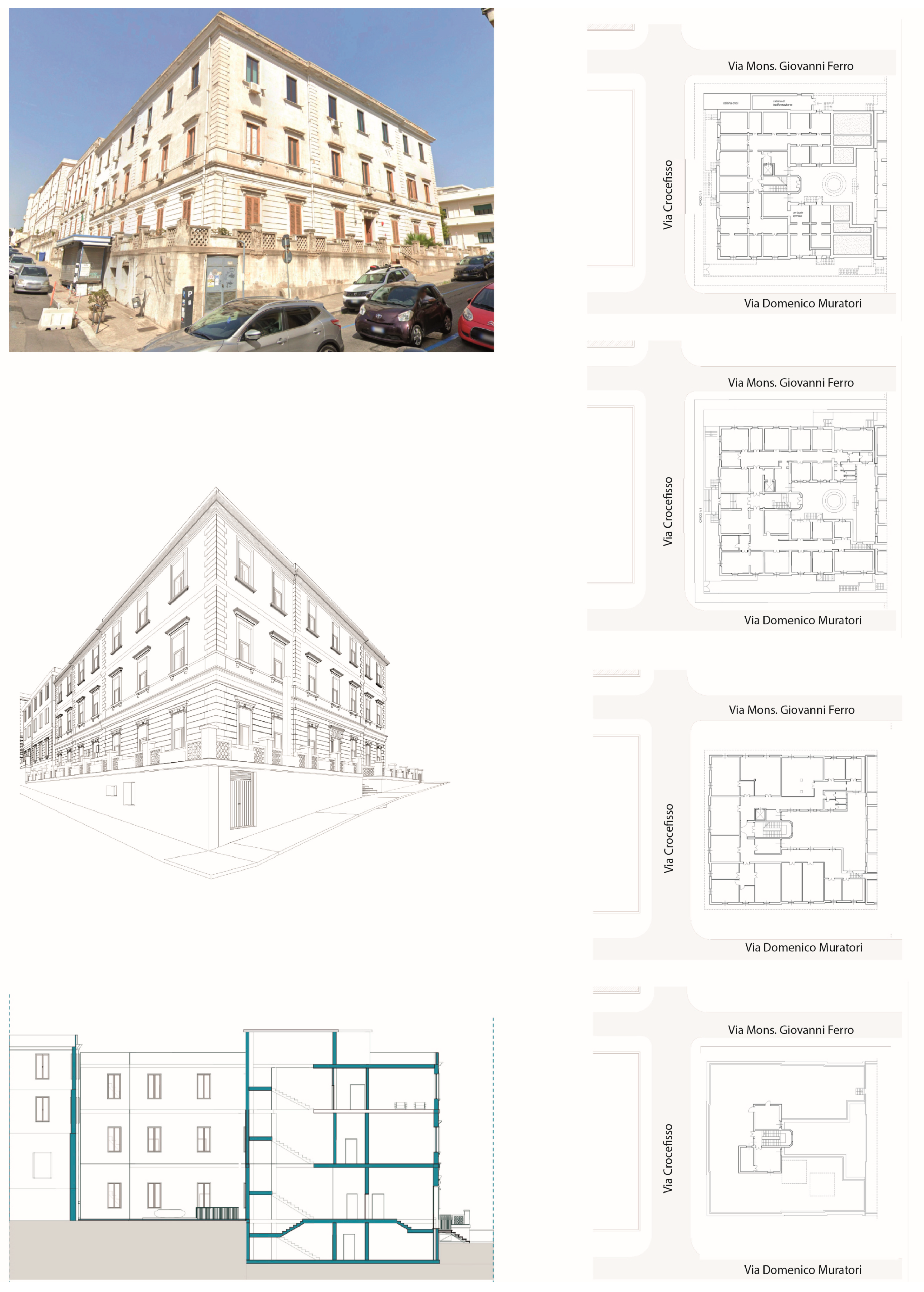
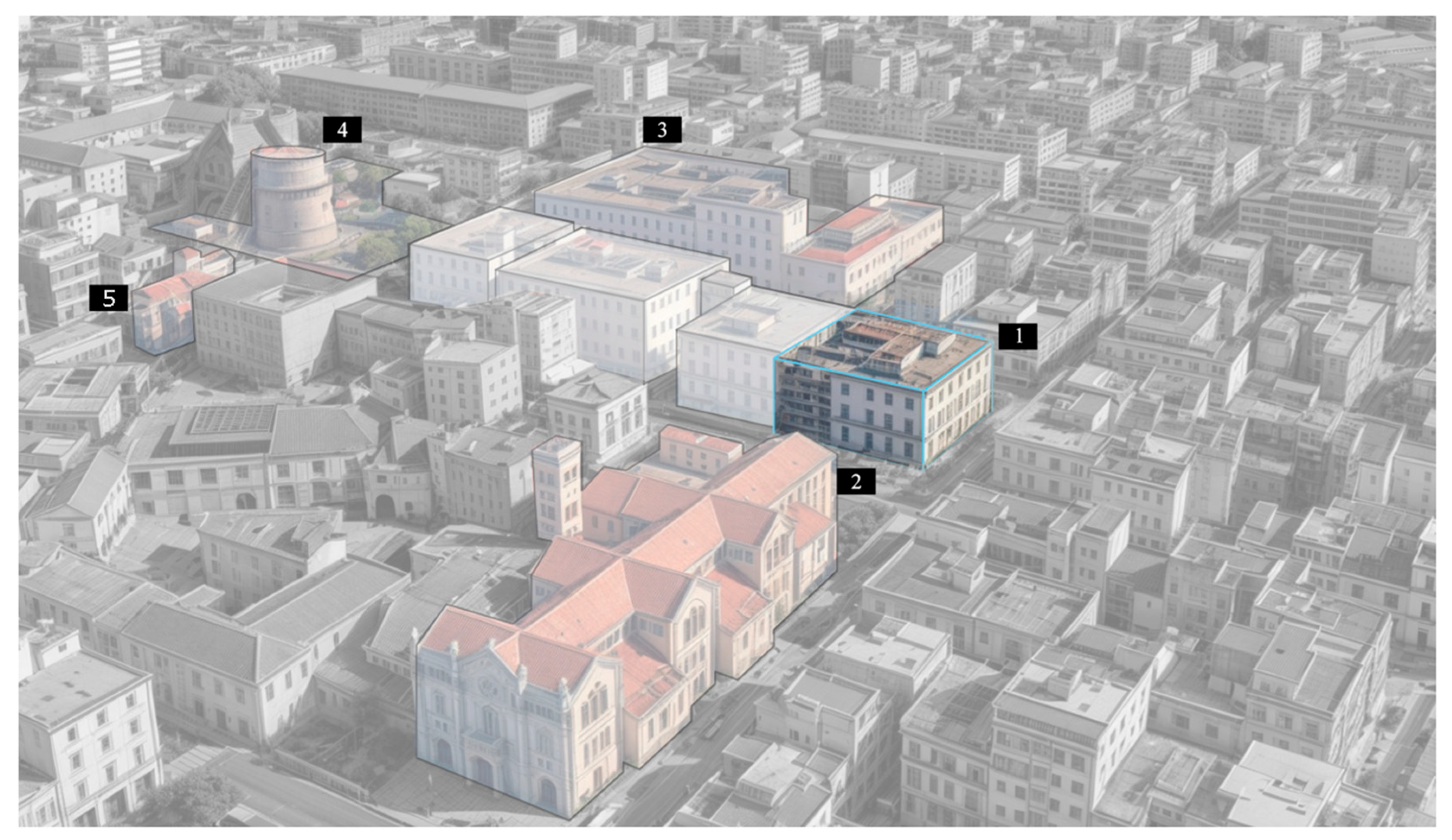
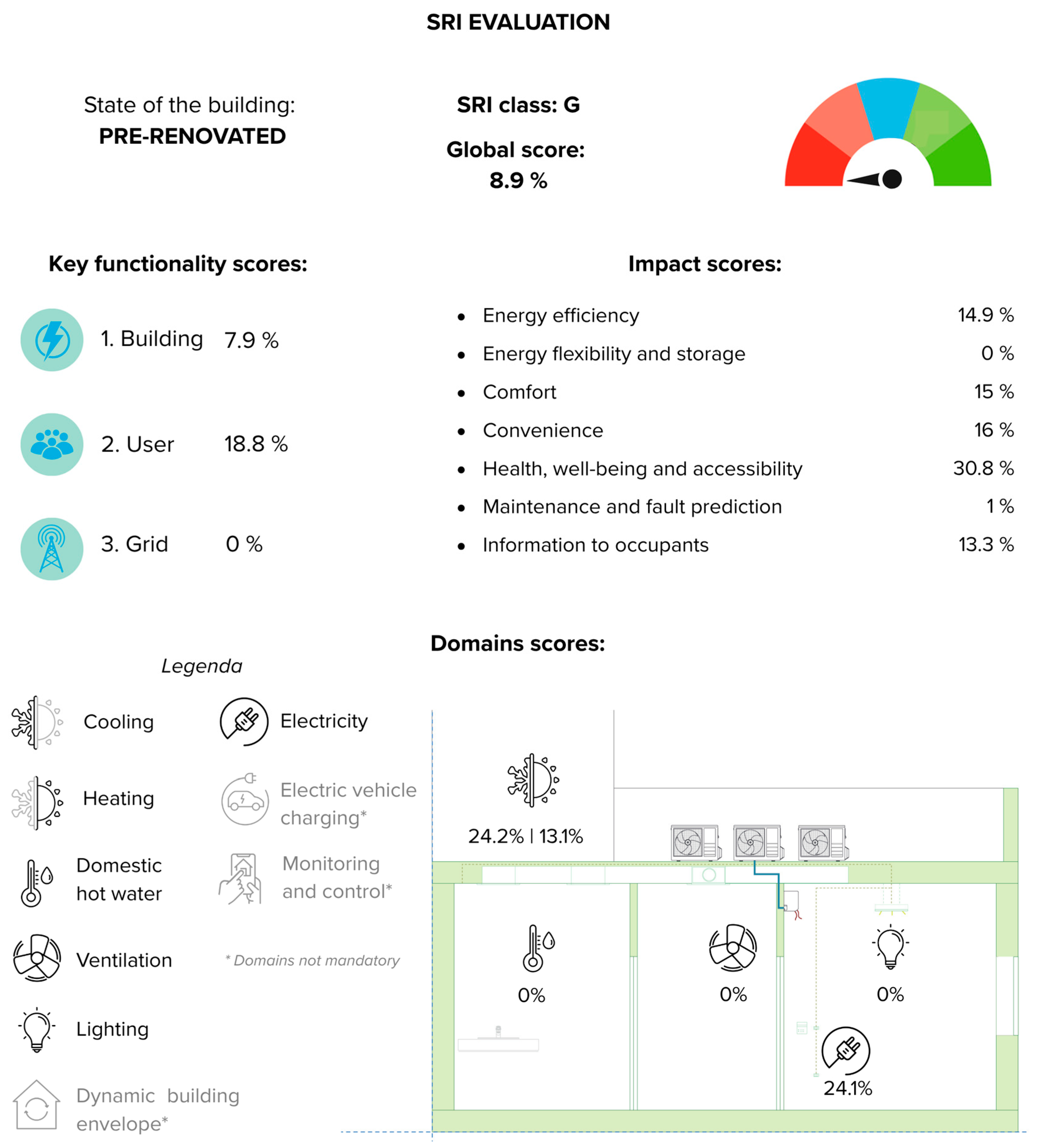

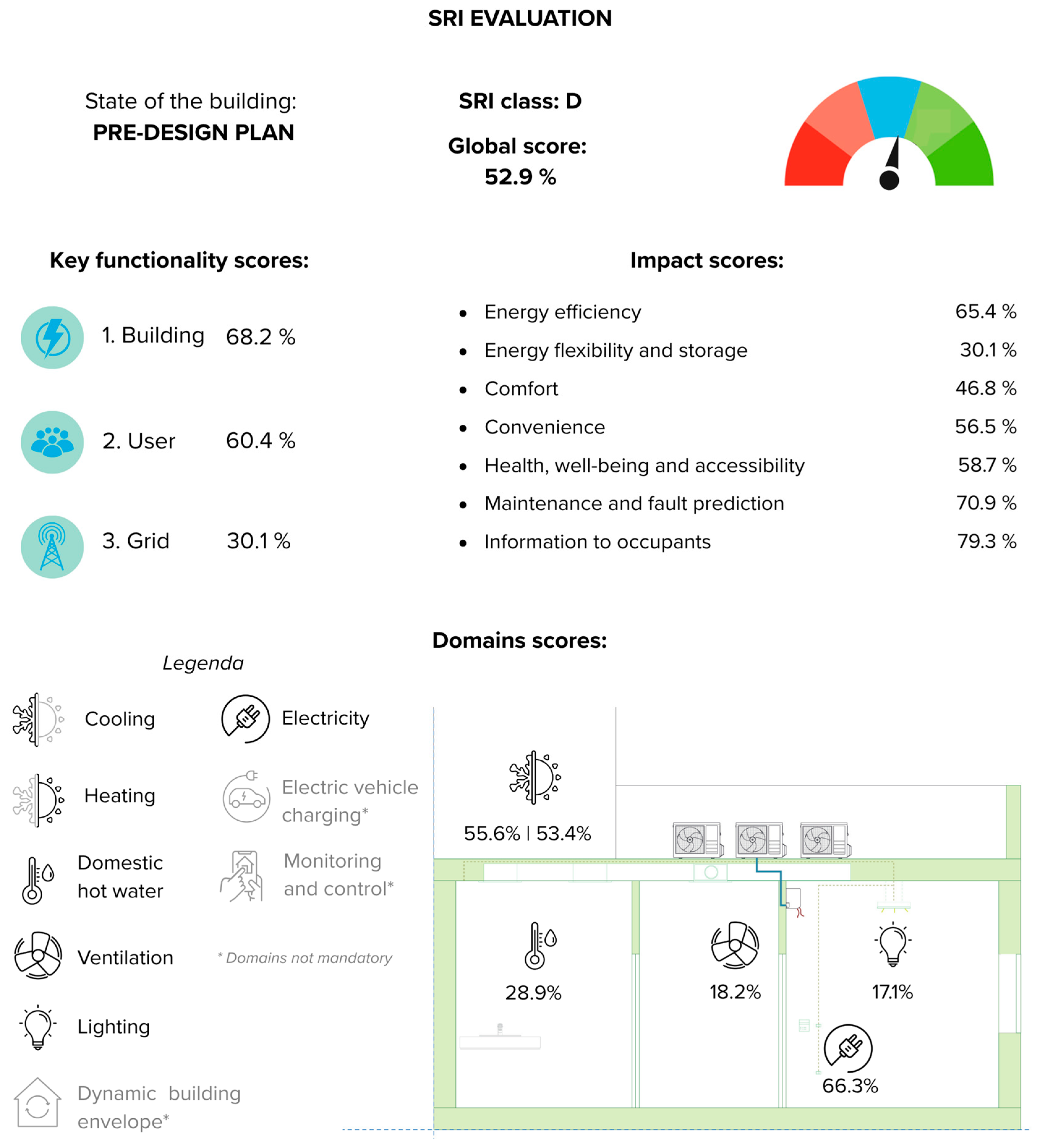
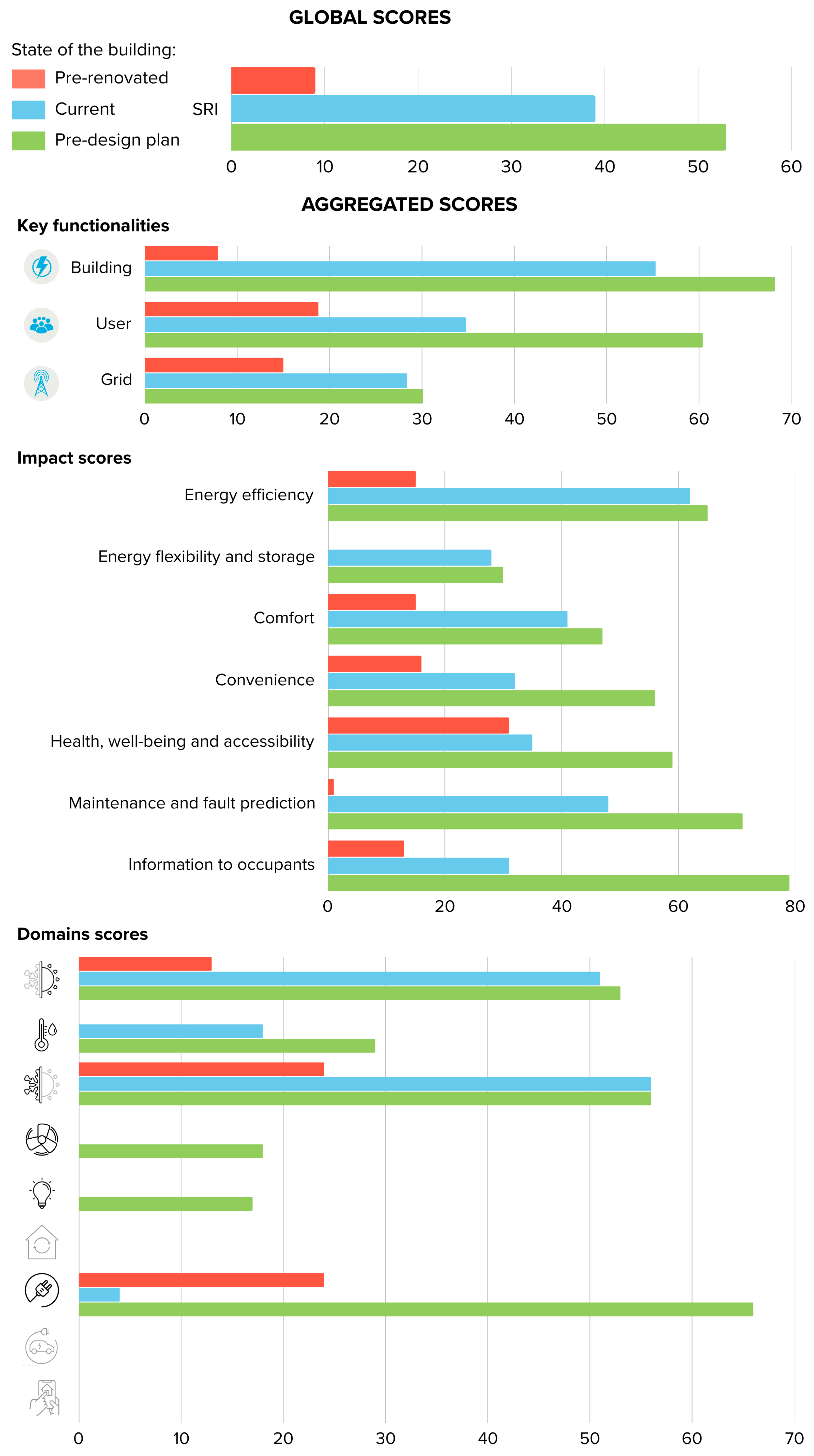
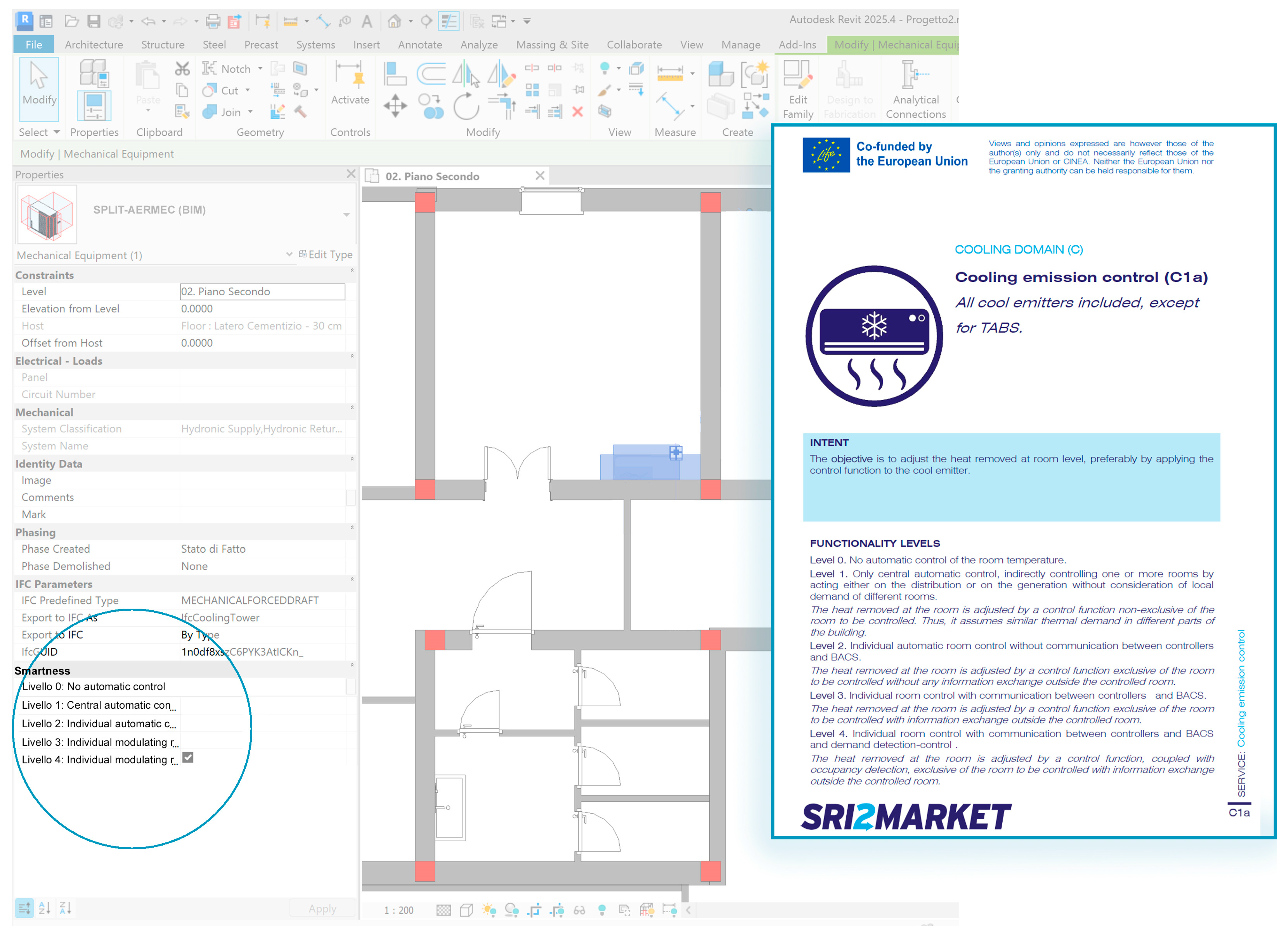

| Project | Partners | Tool |
|---|---|---|
| iEPB https://iepb-project.eu/ (accessed on 10 April 2025) | Austria | |
| Greece | ||
| Netherlands | ||
| Spain | ||
| SmarterEPC https://lifeprojects.r2msolution.com/smarterepcthe-new-hub-for-bulding-evaluation/ (accessed on 10 April 2025) | Cyprus | |
| Finland | ||
| France | ||
| Greece | ||
| Italy | ||
| Netherlands | ||
| Romania | ||
| tunES https://empirica.com/tunes/ (accessed on 10 April 2025) | Austria | |
| Croatia | ||
| Greece | ||
| Hungary | ||
| Italy | ||
| Poland | ||
| Slovenia | ||
| SRI2market https://ieecp.org/projects/sri2market/ (accessed on 10 April 2025) | Austria | SRI2market https://sri2market.eu/sri/proyecto/ (accessed on 10 April 2025) |
| Croatia | ||
| Cyprus | ||
| France | ||
| Portugal | ||
| Spain | ||
| Smart Square https://www.smartsquare-project.eu/ (accessed on 10 April 2025) | Belgium | Smart-ready-GO! https://www.smart-ready-go.eu/ (accessed on 10 April 2025) |
| Bulgaria | ||
| Cyprus | ||
| Greece | ||
| Ireland | ||
| Italy | ||
| Netherlands | ||
| Romania | ||
| SRI-ENACT https://srienact.eu/ (accessed on 10 April 2025) | Austria | SRI toolkit https://www.srienact-tool.eu/login (accessed on 10 April 2025) |
| Belgium | ||
| Bulgaria | ||
| Croatia | ||
| Greece | ||
| Latvia | ||
| Czech Rep. | ||
| Romania | ||
| Spain | ||
| easySRI https://www.easysri.eu/en (accessed on 10 April 2025) | Austria | |
| Cyprus | ||
| Greece | ||
| Ireland | ||
| Italy | ||
| Norway | ||
| Spain |
| Domain | Pre-Renovated State | Current State | Pre-Design Plan |
|---|---|---|---|
| H—Heating | Individual room control | Individual room control with communication between controllers and BACS | Individual room control with communication between controllers and BACS |
| Constant temperature control | Demand-based control of air flow Variable speed pump control Variable control of heat generator capacity (inverter frequency control) Control according to dynamic priority list | Demand-based control of air flow Variable speed pump control Variable control of heat generator capacity (inverter frequency control) Control according to dynamic priority list | |
| No report information | Central or remote reporting of current KPIs | Central or remote reporting of current KPIs and historical data | |
| DHW—Domestic Hot Water | Automatic control (on/off) | Automatic control (on/off) | Automatic control (on/off) Automatic control of solar storage charge |
| No report information | Indication of actual values | Indication of actual values | |
| C—Cooling | Individual room control | Individual room control with communication between controllers and BACS | Advanced central automatic control with intermittent operation and/or room temperature feedback control |
| Variable speed pump control (external demand signal) | Variable speed pump control (external demand signal) | ||
| No interlocking (avoiding simultaneous heating and cooling in the same room) | Total interlocking | Total interlocking | |
| Variable control of cooling production capacity depending on the load or demand (inverter frequency control) Load prediction-based sequencing | Variable control of cooling production capacity depending on the load or demand (inverter frequency control) Load prediction-based sequencing | ||
| No report information | Central or remote reporting of current KPIs | Central or remote reporting of current KPIs | |
| L—Lighting | Manual on/off switch control | Manual on/off switch control | Manual on/off switch + additional sweeping extinction signal |
| E—Electricity system | Report on current electricity consumption on building level | Report on current electricity consumption on building level | Performance evaluation including forecasting and/or benchmarking Current state of charge (SOC) data available Real-time feedback or benchmarking on appliance level Automated management of local electricity consumption based on current renewable energy availability Automated management of (building-level) electricity consumption and electricity supply to neighboring buildings (microgrid) or grid |
Disclaimer/Publisher’s Note: The statements, opinions and data contained in all publications are solely those of the individual author(s) and contributor(s) and not of MDPI and/or the editor(s). MDPI and/or the editor(s) disclaim responsibility for any injury to people or property resulting from any ideas, methods, instructions or products referred to in the content. |
© 2025 by the authors. Licensee MDPI, Basel, Switzerland. This article is an open access article distributed under the terms and conditions of the Creative Commons Attribution (CC BY) license (https://creativecommons.org/licenses/by/4.0/).
Share and Cite
Lauria, M.; Azzalin, M.; Giglio, F.; La Face, G.M. Responsive Public Policies for Smart and Sustainable Buildings: An Experimental Application of the Smart Readiness Indicator. Buildings 2025, 15, 2002. https://doi.org/10.3390/buildings15122002
Lauria M, Azzalin M, Giglio F, La Face GM. Responsive Public Policies for Smart and Sustainable Buildings: An Experimental Application of the Smart Readiness Indicator. Buildings. 2025; 15(12):2002. https://doi.org/10.3390/buildings15122002
Chicago/Turabian StyleLauria, Massimo, Maria Azzalin, Francesca Giglio, and Giovanna Maria La Face. 2025. "Responsive Public Policies for Smart and Sustainable Buildings: An Experimental Application of the Smart Readiness Indicator" Buildings 15, no. 12: 2002. https://doi.org/10.3390/buildings15122002
APA StyleLauria, M., Azzalin, M., Giglio, F., & La Face, G. M. (2025). Responsive Public Policies for Smart and Sustainable Buildings: An Experimental Application of the Smart Readiness Indicator. Buildings, 15(12), 2002. https://doi.org/10.3390/buildings15122002








